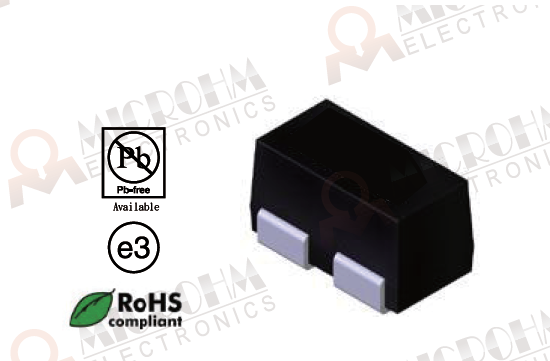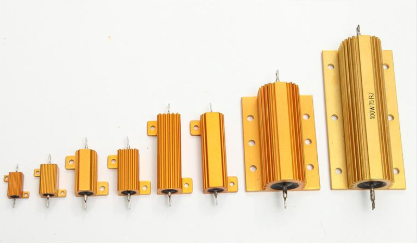Position:Home » Technical Articles
Wirewound Resistors for Circuit
Writer:Microhm Page View:Date:2019-10-21
Wirewound resistors can be as good as ±0.005% with their initial tolerance, with a TCR (temperature coefficient of resistance) as low as 5 ppm/°C typical but usually about 15 to 25 ppm/°C. Thermal noise is low and tracking to ±2 ppm/°C over a limited temperature range is possible, though it adds considerable cost. Microhm Electronics's KSW precision resistor has a tolarance ±0.005% and 5 ppm /°C.

There are certain important manufacturing factors that affect wirewound resistor properties. For example, the wire is wound under tension around a core, which can elongate the wire and alter its diameter. In addition, during formation of the coil, each turn of wire has the inside surface under compression and the outside surface under tension. These deformations are permanent and irreversible. They affect stability and unpredictably shift the TCR from its original value. Over long periods, the wound element tends to change physically as the wire attempts to regain its original shape.
Permanent mechanical changes, which occur randomly and in unpredictable ways, cause equally random and unpredictable changes in the wire’s electrical parameters. Therefore, after winding, resistance elements can have highly variable electrical performance characteristics ranging from excellent to poor.

Wirewound resistors have relatively high inductance values due to their coiled-wire construction. There is also an intercoil capacitance. These units thus exhibit poor high-frequency characteristics, especially above 50 kHz. Microhm Electronics have various wirewound resistors, such as NUAL series, EE series and more.
It is difficult to make two wirewound resistors of equal value that can accurately track each other over a specified temperature range. Such tracking is of great importance in high-precision circuitry.
Traditional wirewound manufacturing methods do not isolate the resistive element from the various stresses arising out of handling, packaging, insertion pressures, and lead forming, for example. Here, one must consider tension applied to axial leads on mounting and pressure on the package exerted by mechanically induced forces.

There are certain important manufacturing factors that affect wirewound resistor properties. For example, the wire is wound under tension around a core, which can elongate the wire and alter its diameter. In addition, during formation of the coil, each turn of wire has the inside surface under compression and the outside surface under tension. These deformations are permanent and irreversible. They affect stability and unpredictably shift the TCR from its original value. Over long periods, the wound element tends to change physically as the wire attempts to regain its original shape.
Permanent mechanical changes, which occur randomly and in unpredictable ways, cause equally random and unpredictable changes in the wire’s electrical parameters. Therefore, after winding, resistance elements can have highly variable electrical performance characteristics ranging from excellent to poor.

Wirewound resistors have relatively high inductance values due to their coiled-wire construction. There is also an intercoil capacitance. These units thus exhibit poor high-frequency characteristics, especially above 50 kHz. Microhm Electronics have various wirewound resistors, such as NUAL series, EE series and more.
It is difficult to make two wirewound resistors of equal value that can accurately track each other over a specified temperature range. Such tracking is of great importance in high-precision circuitry.
Traditional wirewound manufacturing methods do not isolate the resistive element from the various stresses arising out of handling, packaging, insertion pressures, and lead forming, for example. Here, one must consider tension applied to axial leads on mounting and pressure on the package exerted by mechanically induced forces.
Keywords:Wirewound Re
Latest News
- Resistor's role in measuring and correcting LED,,,
- Single through-hole resistors' characteristics ,,,
- Why shunt resistors for current sense applicati,,,
- Metal-film resistors with small size, high resi,,,
- 36W High-Current Shunt Resistors MMS8420,,,
- 1W Surface Mount Resistor MPR1206,,,
- An Overview of Microhm Electronics' Resistor Pr,,,
- More anti-sulfur resistors used in harsh envir,,,
- Resistance changes with temperature,,,
- 140W TO247 High Power Heatsinkable Resistor,,,
- MMS5930 is ideal for current sensing in industr,,,
- Shunt resistors selection for engineers' design,,,
- Considerations for choosing precision resistors,,,
- Ceramic Encased Cement Resistors NWH Series for,,,
- Resistors for Passive Balancing in Battery-Pow,,,
Hot Articles
- Microhm will take part in 10th Automotive World,,,
- Thanks for Visiting Microhm's Booth E5-5706 in ,,,
- Resistors in Short Supply: Blame Cars,,,
- New lunch: High Power Precision Shunt Resistor,,,,
- How to Test a Resistor,,,
- Innovative Technology, Future Electric: Electri,,,
- What is Precision Resistors?,,,
- SMD Resistors Sizes and Packages,,,
- The Construction and Features of Metal Film Res,,,
- What is a TO-220 Resisor?,,,
- Hot Selling Products: Precision Shunt Resistors,,,
- How to Calculate the Equivalent Resistance Valu,,,
- What is a Fixed Resistor?,,,
- Resistors in LED Circuits,,,
- Resistors Types and Materials Overview,,,
Resistance applications
- Precision Resistors' Construction and TCR,,,
- Surface Mount Resistor's Size and Package ,,,
- The Main Application for High Precision and Low,,,
- Miniature future for passive electronic compone,,,
- Select the Right Resistor for Harmonic Filterin,,,
- Difference Between High Precision Resistors and,,,
- The Measurement Accuracy of Automotive Shunt is,,,
- Carbon Film Resistors' Features and Application,,,
- Heater Blower Motor Resistor in Air Conditioner,,,
- Urbanization Development Bringing the Transform,,,
- Why Zero-Ohm Resistors?,,,
- BMS for New Energy Vehicle,,,
- Shunt Resistor MMS8420 for High Current Stable ,,,
- Industrial Roberts Applied to Solar Photovoltai,,,
- The Four Important Functions of Alloy Resistors,,,
